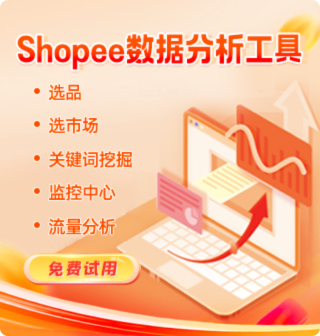-
用户166****8548
Shopee Seller Platform: A Comprehensive Guide for Merchants
Shopee, one of the fastest-growing e-commerce platforms in Southeast Asia and Latin America, owes much of its success to its robust and user-friendly Seller Platform. This platform empowers individuals and businesses to open digital stores, reach millions of potential customers, and manage their operations efficiently. In this article, we offer an in-depth overview of the Shopee Seller Platform, covering its features, benefits, and actionable tips for sellers aiming to succeed in the competitive online marketplace.
1. What is the Shopee Seller Platform?
The Shopee Seller Platform is a dedicated backend system provided by Shopee to onboard and manage sellers. It allows merchants to list products, handle orders, communicate with buyers, track sales performance, and leverage marketing tools—all from a centralized dashboard.
Accessible via web and mobile app, the platform caters to sellers of all sizes—from individual entrepreneurs to large enterprises—with customizable features suited to different business needs.
2. Key Features of Shopee Seller Platform
a) Easy Store Registration and Setup
Sellers can quickly register using their email or mobile number, submit necessary business information, and create their online storefront. Shopee supports various seller categories including individuals, SMEs, and brands.
b) Product Listing and Management
- Bulk Upload: Sellers can upload multiple products via CSV or Excel files, saving time on large inventories.
- Detailed Listings: Options to add high-quality images, product descriptions, specifications, pricing, and stock quantity.
- Category and Attribute Selection: Ensures products are accurately classified for better search visibility.
c) Order Management System
- Real-Time Notifications: Sellers receive instant alerts for new orders, cancellations, and returns.
- Order Processing Tools: Mark orders as packed, shipped, or completed and print shipping labels directly from the platform.
- Customer Communication: Integrated chat feature to resolve buyer queries swiftly.
d) Performance Analytics
Comprehensive dashboards provide insights on sales trends, revenue, best-selling products, customer ratings, and return rates, which help sellers optimize operations.
e) Marketing and Promotional Tools
- Shopee Ads: Pay-per-click advertising to boost product visibility.
- Flash Deals and Vouchers: Create time-limited discounts and coupons to attract shoppers.
- Shopee Live: Live streaming feature enabling sellers to demonstrate products and engage with audiences in real-time.
f) Logistics and Shipping Integration
Shopee partners with multiple courier services, and sellers can schedule pickups or drop off parcels. Integration with logistics providers simplifies tracking and delivery.
g) Payment and Settlement
Secure payment processing with periodic settlement of funds directly to sellers’ bank accounts. Reports on commissions, fees, and transaction history are available.
3. Benefits of Using Shopee Seller Platform
Access to Large Customer Base: Shopee’s millions of active users provide sellers with ample market opportunities across multiple countries.
Low Entry Barrier: Simple onboarding process with no upfront listing fees makes it attractive for new sellers.
Localized Support: The platform offers support in local languages and currency, tailored to specific markets.
Integrated Ecosystem: From marketing to logistics, the platform offers end-to-end solutions, reducing the need for multiple third-party services.
Data-Driven Decisions: Analytics tools empower sellers to make better inventory and pricing decisions.
4. Tips and Best Practices for Sellers on Shopee
a) Optimize Product Listings
Use clear, high-resolution images showing different angles. Write detailed but concise descriptions including keywords customers are likely to search for. Highlight your product’s unique selling points.
b) Competitive Pricing Strategy
Research competitor prices and factor in shipping fees and Shopee’s commission when pricing. Consider running promotions during Shopee’s mega sales events like 11.11 or 12.12.
c) Maintain Excellent Customer Service
Respond to buyer inquiries promptly and politely. Handle returns and refunds professionally to build positive reviews and seller ratings.
d) Leverage Shopee Marketing Tools
Invest in Shopee Ads to increase product visibility. Use vouchers and bundle offers to encourage larger purchases. Participate actively in flash sales and live streams.
e) Efficient Order Fulfillment
Pack and dispatch orders quickly. Use Shopee’s integrated logistics services to ensure reliable delivery. Keep buyers updated on their order status.
f) Monitor Performance Metrics
Regularly review sales reports and customer feedback. Identify top-selling products and underperforming listings and adjust strategy accordingly.
5. Common Challenges Sellers Face and How to Overcome Them
Inventory Management: Overstocking or stockouts can lead to lost sales or increased costs. Use Shopee’s inventory tools and sync with offline stock levels if applicable.
Competition: High competition requires continuous marketing and price optimization. Focus on niche products or superior customer experience for differentiation.
Returns and Disputes: Establish clear return policies and communicate them upfront. Promptly resolve disputes through Shopee’s dispute resolution center.
Adapting to Platform Updates: Stay informed about changes to policies, fees, or features by following Shopee’s seller announcements.
6. Expanding Beyond Domestic Markets with Shopee
Shopee supports cross-border selling, allowing sellers to reach buyers in other countries where Shopee operates. Sellers interested in cross-border trade should:
Adjust listings to local languages and currency where possible.
Understand shipping times and customs requirements to manage buyer expectations.
Utilize Shopee’s logistics partners experienced in international shipping.
Conclusion
The Shopee Seller Platform offers a comprehensive, user-friendly environment for merchants to build and scale their online businesses efficiently. By leveraging its powerful tools—ranging from product management to marketing and logistics—sellers can maximize their reach and profitability in increasingly competitive e-commerce landscapes.
Success on Shopee requires not only mastering the platform itself but also adopting proactive sales strategies, outstanding customer service, and continuous performance monitoring. With dedication and smart use of resources, sellers can unlock great potential through Shopee’s dynamic ecosystem.

